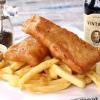
imfishn
-
Content Count
88 -
Joined
-
Last visited
-
Days Won
2
Reputation Activity
-
 imfishn reacted to Kelvin in Wading Bag
imfishn reacted to Kelvin in Wading Bag
I don't have the bag anymore as the material eventually broke down. The zip still held up with a freshwater rinse after each trip and some inox spray
I got the zip from spotlight from memory and used a large sewing needle and pliers. It looked really ugly but did the job
-
 imfishn reacted to Kelvin in Wading Bag
imfishn reacted to Kelvin in Wading Bag
I've previously used a large zip and stitched it on with some light mono. Did the job ok.
-
 imfishn reacted to Des in BEWARE the BAG SNATCHERS IN A CUP DAY CROWD
imfishn reacted to Des in BEWARE the BAG SNATCHERS IN A CUP DAY CROWD
A sunny Cup day meant getting out for a fish rather than be stuck home watching the races.
.
The flats were very crowded on race day. There were hordes and hordes of legal but smaller sizes Yellow Fin Whiting in the 25 to 29cm mark. They were a fish a cast for much of the day. But … Not the kind of horses I wanted to back.
With so many little mugs about it was inevitable that the sly and the opportunistic would be out there ready to prey on them.
.
A sunny day on the sandflats is such a delight. The clear visibility and water clarity makes watching the passing parade a pleasure. Such an array of different species that cohabit this shallow water ecosystem. Amongst all the delightful sights on a sunny race day, are the diverse collection of Rays cruising around mooching in the sand. But amongst the happy crowd a few seedy characters lurk.
Yup, “Bronzy Bob” turns up just when you least expect it. While you are distracted. Intensely concentrating on a big Whiting chasing your surface lure, one of only a few on a lean day, your wading tub suddenly lurches left!
.
“Bob the Bag Snatcher Bronzy” was at it again. He snuck up from behind and latched onto my catch-keeper bag that I have dangling in the water.
Shooing him off did not work. He was persistent.
When he made one too many swipes at my catch bag of whiting, I thought I should teach him a lesson.
I allowed him to feel comfortable for yet another swipe. When he was just about to launch into my keeper bag I scooped him up with my landing net.
It was a bit of a heavier load for the landing net.
He was a healthy looking 3 foot specimen.
I gave him a stern talking too, a slap on the snoot, took a couple of mug shots for the “Crim files”, and sent him on his way.
I am told they are very good eating at this size if they are prepared properly after they are caught.
However there is just not enough room in my wading tub to handle the job.
Lucky for the Bronzies!
These guys are frequent but annoying visitors on the sandflats.
Mostly in the 3 to 4 foot range.
They are not a threat, just disturbing. I can assure you they are discerning feeders and far prefer the whiting to the revolting taste of your waders and leg within!
On the occasional dull session I have targeted them with a whiting fillet on ganged hooks. Good fun landing them on your whiting gear, whilst wading the shallows !!!
~ One hooked up on a previous session.
The biggest I have come across on the shallow sandflats is a 6 footer, maybe 7 feet. I didn’t hang around for a closer inspection and accurate measurement!
.
My luck had abandoned me today as the weather factors negated each other to provide difficult conditions for stimulating the YFW bite. The wind speed and direction up the gulf, negated the small natural tide movement and the resultant actual tide was virtually at a standstill all day.
Even if only small, Some tide movement is a great stimulant for the YFW to feed.
It was hard work catching and releasing dozens and dozens of smaller fish.
But I still managed to back in a few good horses on cup day.
I finished with four fish around 40 to 41cm. And kept 10 of the better ones, that were mostly around 35cm.
.
~ "Bob" took a chomp on this one!
Regardless of the fishing, it is always an interesting and enjoyable day wading the sandflats.
Cheers, Des
-
 imfishn reacted to Des in DONKEYS on the DODGE TIDE
imfishn reacted to Des in DONKEYS on the DODGE TIDE
Regular post readers will know I like to fish the dodge tides for Yellow Fin Whiting .
I cover a variety of reasons in detail, in this previous post:
.
One very good reason, is that you will regularly find better quality fish on the dodge tide.
YFW movements and feeding are highly influenced by the tide. Revolving around the largest tide of the day, they tend to have a 24 hour digestive and feeding cycles.
So even when the tides do not move much on the dodge, they will still have a need to feed within their cycles. The larger YFW have greater food needs and will generally preference a bigger meal such as juvenile prawns or clickers.
With the small dodge tide their feeding will be concentrated to the smaller area, covered by little water flooding in. They will be easier to find.
The terrain/substrate that holds their preferred food will naturally attract a higher concentration of larger YFW.
That terrain you can feel under foot. The softer food holding substrate.
The small tide movement, along with a deeper low tide, holds water over these prime feeding grounds longer. It provides for prolonged access to this zone for both fish and fisher person.
A better explanation of productive terrain is in this post :
.
The dodge tide on Monday with a High of 1.77 mt @ 8.15am and a Low of 0.97 mt @ 11.36pm provided a long drawn out, run off tide. With a prolonged spell under water, of some prime food holding areas. It looked like an ideal tide and I set off fishing.
YFW are always stimulated by tide movement to feed. These tides do not provide much of that stimulus. However there are other factors that come into play.
.
The day started slowly without a strike for the first hour. The warmth of the day gradually started to take effect and the first to stir were some small Whiting.
With the warming arvo came an arvo seabreeze, as well as a predicted strengthening southerly wind. YFW love a heavy rippled surface to take cover under and lose their feeding inhibitions. The bite picked up strongly and catches were now steady. In the constrictions of the upper gulfs any lower gulf southerly wind can force water up. A wind tide pushes in. It further stimulated the YFW and kept the feeding grounds covered with a perfect level of water for a wading fisherman.
.
I caught my bag of 20 in good time. This situation regularly provides quality fish, with10 of the fish ranging from 38 to 41cm. Most of the remaining 10 fish were around 35cm.
Sugapen 95 was the most successful lure. Then again I did not need to use a lot of variety.
The new Sugapen Splash caught it’s share when the afternoon breeze picked up. This is shaping up as the perfect lure for that strong summer afternoon breeze that kicks up a bit of chop.
A few were also taken on the Ecogear ZX, when I was forced to go subsurface as a pack of persistent juvenile seagulls are yet to learn lures don’t taste good.
.
Hopefully we have some more fine weather for the next dodge tide.
Tight lines all.
Cheers, Des
-
 imfishn reacted to Des in CHAIN REACTIONS with CHANGING SEASONS
imfishn reacted to Des in CHAIN REACTIONS with CHANGING SEASONS
Warmer water early in the season will certainly bring them into the metro areas earlier. I saw a post from Brighton Tackle claim they had been sighted locally.
As I have previously mentioned the ongoing heavy netting of this species over winter in the last few years is having a significant detrimental impact on the overall stock status. Hopefully they are resilient and bounce back.
-
 imfishn got a reaction from Des in CHAIN REACTIONS with CHANGING SEASONS
imfishn got a reaction from Des in CHAIN REACTIONS with CHANGING SEASONS
Amazing insight and information Des, and what a great haul of beautiful fish ...well done👍 it all sounds very promising for us keen anglers. Do you think this pattern will also carry through to our metro beaches for YFW?
-
 imfishn reacted to Des in CHAIN REACTIONS with CHANGING SEASONS
imfishn reacted to Des in CHAIN REACTIONS with CHANGING SEASONS
The seasons are changing. The temperature is rising.
The water is warming. It is all happening a bit earlier this year.
Lizards are crawling on the roads. And “Lizards” (flathead) are crawling in the sea.
Water birds are gathering, lining up for a feast of baitfish from above.
The Flathead are lining up for a feast of baitfish from below.
In these ambient temperatures, food is plentiful in the shallows.
The ecosystem has had a great kickstart with the rise in temperatures and every thing comes alive and thrives on the sandflats.
Temperature is the biggest driver for a series of chain reactions, in the sandflats ecosystem.
I am forever monitoring the water temperatures.
The rise in water temperature is early this year.
A series of natural events occur, which results in delivering us fishers, some fine Yellow Fin Whiting and Flathead.
Stimulated by the rise in water temperature about now our local Prawns, the Western King Prawn, start spawning in their mid gulf grounds.
Also now, the Haswell Shore Crabs shrug off their cold weather torpor and also spawn in the inshore shallows.
Post larval Juvenile Prawns start migrating from mid gulf to the warmer, shallow, inshore waters of the upper gulfs.
The Haswell Shore Crab larval zoea, now abundant, provides food for the juvenile Prawns and schools of baitfish.
There is a boom in the population of Juvenile Prawns, Haswell Shore Crabs, and Baitfish in the inshore waters … And also their predators. YFW and Flathead, have moved in, enjoying this abundance of food.
Having experienced a sustained period of exposure to higher water temperatures, the YFW have now, increased their metabolisms and have developed voracious appetites. The larger predatory YFW that I like to target are now aggressively hunting on the sandflats. Devouring juvenile prawns and shore crabs.
So it is a perfect time to place myself at the end of these chain reactions and target some YFW and Flathead.
I took advantage of the warm weekend.
Given the tides, I selected an area that amplifies the small tide movement and works best on the slower tides.
I started with chasing Flathead on the falling tide. The Flathead are very active chasing the baitfish as they retreat to the shelter of weedy areas in deeper water.
Fishing for them in heavily weeded areas does present it’s challenges.
Lures with trebles catch too much weed. And when a Flathead is hooked they will head into the weed. All the exposed treble barbs, hook onto the surrounding weed and help the Flathead throw the lure.
I have recently started to use floating hardbodies like OSP Bent Minnows, with singles and assist hooks, for these areas. These hooks pull through the weed easily. So far, I have yet to have a Flathead throw these hooks.
Look for where the Herons are feeding to show you where the baitfish are and the Flathead will be holding just downstream.
I was able to extract 3 Solid Flathead that were hiding around the weed, terrorising the baitfish, before the tide slowed.
Next on the agenda were the YFW. A good depth of water was holding over the softer feeding sandflat areas. Usually you will find this substrate holds more food and fish.
Whilst not feeding as aggressively as when there is more water movement, the YFW were still keen enough to take a well worked lure offering over the sandflats. My usual favourites, Sugapen, Ecogear ZX and Zipbaits Skinny Pop, were the more successful lures.
However it is a new season and there are always a few new offerings to try out.
They did not get too much time in the water but both these new lures took fish.
The New Sugapen Splash, which is perhaps better suited to a choppier day still took a fish.
Daiwa’s Slippery Dog 80cm in the colour “Ebi” that I had not previously come across, I thought could work well in this area, had some success.
A drop in air pressure with a change in wind direction from North to SW, pushed water up into the gulf and provided a small wind tide. The water movement, stimulated the fish to bite late into the afternoon. “Bob the bag snatcher” is also making an early season appearance. I normally don’t see them on the sandflats till November.
I kept 14 of the better YFW. Most are over 35cm. And the best a very nice 42cm.
The Flats are Firing early this year !!! Hopefully we can look forward to a great season ahead.
The only downside is the heavy toll the professionals have taken over this winter as they increasingly search for alternative species to supplement their restricted and dwindling catches.
Tight lines all.
Cheers, Des
-
 imfishn reacted to MAH in YFW Sighted!
imfishn reacted to MAH in YFW Sighted!
Last night I was fishing at Glenelg; when I was leaving, I saw a few decent schools of YFW cruising the shallows. I hadn't seen them schooled up in such numbers this summer.
The other thing that caught my eye was an enormous flatty stalking the schools of YFW. I've never seen such a big flatty in the metro waters. If I wasn't on my way to catch the last tram of the night, I would have stopped and thrown a couple of lures at it.
-
 imfishn got a reaction from Des in SUNSHINE … ON MY SHOULDERS
imfishn got a reaction from Des in SUNSHINE … ON MY SHOULDERS
Nice catch there Des! Some ripper fish...😯
-
 imfishn reacted to Des in SUNSHINE … ON MY SHOULDERS
imfishn reacted to Des in SUNSHINE … ON MY SHOULDERS
SUNSHINE … ON MY SHOULDERS MAKES ME HAPPY
.
I had checked the weather ahead for this week.
And I could see there was a spell of Sunshine ahead.
So I managed to rearrange my week and set off fishing on this Sunny day.
It was such an enjoyable day, fishing in the brilliant sunny conditions today. And there were some good results.
.
Here are a few reasons why sunny days are great for lure fishing Yellow Fin Whiting on the Sandflats.
.
Simply put, on sunny days you will catch more Yellow Fin Whiting !
There is the extra warmth in the water that a sunny day adds. Increasing the fish metabolism and their eagerness to feed.
There is usually much better water clarity on sunny days.
Your lures are so much more visible to the fish.
Bright sunshine will also reflect a lot more off your lures, gaining the fish’s attention from a long way off.
Fish will notice your lure from a much greater distance, and often come hurtling in, at right angles from afar. Most often this happens very late in your retrieve.
Importantly, strong sunshine produces an extra “attractant”. Another stimulus. Something extra for YFW to chase.
The strong overhead sunlight casts a strong shadow from your lure onto the sand below. The stronger the sunshine, the stronger the shadow, and the stronger the stimulus.
Yes, in bright sunshine, you will often see whiting chase the lure shadow cast onto the sand. They will chase and frustratingly grab at the shadow along the sand, before looking up and striking the lure above.
.
The sunny days also provides the fisher with better visibility.
One can clearly see all the terrain on the sandflats. It is much easier to identify and target your casts to known fish holding spots.
Structures like sand steps, shallow ledges, gutters and channels can all be easily seen and cast towards.
You can spot fish a lot easier and further away, in bright sunshine without disturbing them.
Sight casting your lures to and hooking up visible fish while wading the shallows is such a thrill.
The greater visibility of the lure, the chase, the strike, the runs and the fight of the hooked fish, all enhances the experience for the fisher.
It is so much more fun in Sunshine.
.
But really, on these days, it does not matter if you don’t catch fish ! Sunshine on your shoulder just makes you happy.
.
This day started with light winds creating a strong ripple on the surface, under the bright sunshine of a clear blue sky of a hot day.
Clear or lighter coloured lures work better in strong sunshine for me.
These were my successful lures today.
Zipbaits Skinny Pop and Fakie Dog DS in their clear colours took fish.
Smaller lures are easily seen in bright sunshine, and are a bit more subtle in the high visibility and light wind conditions. .
A new lure I tried for the first time today; Zipbaits ZBL Zoea Lipple 45F Floating Lure Col:248. A small juvenile shrimp imitation worked very well. I think they may have been designed for Bream but I knew they would catch YFW on days like today.
Jackson Ebi Panic in the clear colour comes to the fore in these conditions.
The ever reliable Sugapen in MB16 was still producing the goods. Although it was the smaller 70mm that was successful rather than my fave size, the 95mm.
.
As every thing is seen so much clearer on these days, I don’t like to give shy fish a second look at the lure immediately. If they have chased the lure and have not committed, my next cast will be 90 degrees away to let them settle before I cast back at them. On windy and cloudier days fish are more aggressive and you can send repetitive casts their way with out scaring them off.
.
The breeze died down later in the afternoon. And the water had glassed off. Fish were getting timid, not hooking up well with many dropped fish.
I finished with 16 fish. Ranging in size, from 30 to 40CM. With 5 fish around the 40cm mark.
.
Sunshine on my shoulder made me very happy on this day.
Cheers, Des
-
 imfishn reacted to MAH in You Can Teach an Old Dog New Tricks
imfishn reacted to MAH in You Can Teach an Old Dog New Tricks
I've been fishing for over 40 years, so grew up with fibreglass rods, monofilament and bait.
Now I have rod rack full of carbon fibre rods, it took me a bit longer to switch over to braid, but up until recently I was still a bait fisho and just didn't use soft plastics or other lures (except squid jigs). I bought plenty, vibes, hard bodies, soft plastics, and would give them a try but next session I would be back to bait.
But this summer I have taken the time to focus on soft plastics. Sure I still pump nippers for YFW and use gents for garfish, but I've spent most of my time learning to use soft plastics.
My target species for learning more about soft plastics has been the humble tommy ruff and 90% of the time I've targeted them off Glenelg jetty. I think a common species of a local jetty has been a very useful way to learn and is basically full circle back to when I was a kid fishing for tommies off Pt Vincent wharf.
Tommies are an interesting fish on soft plastics. They are fairly abundant and readily take a soft plastic, but when hooked, they go nuts with rapid head shakes and early on I was dropping many fish. First thing I changed was my rod. I was using a Daiwa Crosscast Rockfishing rod, it's a light rod with a fast action, rated for 3-10gm lures. at 7'8" it was a good rod for casting distance, the fast action was good for the initial strike, but it was too fast, too stiff for tommies as it lacked the suppleness to have enough bend to keep the pressure on and soak up the head shakes. Luckily I had the ideal rod in the rack and started to use an Atomic Arrowz Bream Surface. This rod had an immediate impact on my success rate landing fish. I pair this with a 1000 Stradic Ci4+.
Probably the biggest impact has been trying different ways to rig soft plastics. I started out using the standard jig heads most people use. There are plenty of people who use these jig heads with success, but I'm not one of them. So I started to use the American style offset worm hooks, setup like a cheb rig.
This was an improvement, but I still was dropping more fish than I was happy with. Like a jig head, the cheb rig has the weight right at the front of the soft plastic and my gut feel was the tommies used the weight and violent head shakes to throw the hook. Next change was to use a running rig setup, or what the Americans refer to as a Carolina rig.
Since changing to this rig, I rarely drop a fish.
Apart from sussing out the right rod and rig, I've settled on S-Factor for scent. I tried Pro-Cure, but it's always out-fished by the S-Factor.
For soft plastics, I most commonly use paddle tail style, but also have success with curly tail grubs. I've tried name brand lures like Zman Slim Swimz and no name cheapies off Aliexpress.
Zman are certainly durable and if using the cheapies on a jighead they get destroyed quickly, however I've found the cheapies are pretty good on an offset worm hook, A jig head holds the lure very firmly and the lack of give means the cheapies have the tail easily ripped off, as opposed to the super stretchy Zman. But on the worm hook, the cheapies are not held on as firmly a get pull down the hook rather than tearing up and last much longer. I vary the size of the cheapies, sometimes using a 5mm and sometimes a 7.5mm, and change depending on what is firing up the fish. As a general rule I find the bigger tommies hit the bigger lures more readily.
It took me a while to get the hang of soft plastics, but now this old dog readily get a feed.
I look at the weather, and if fine, just grab a rod, reel and a few soft plastics; very minimalistic, but a great way to fish and I don't know why I didn't try earlier.
-
 imfishn reacted to Des in A SLOW START TO THIS SEASON / MIXED BAGS
imfishn reacted to Des in A SLOW START TO THIS SEASON / MIXED BAGS
It has been one of the slowest starts to the Yellow Fin Whiting lure fishing season here in S.A.
Adelaide finally got it’s first 30c degree day in 7 months, this November.
It has been a disappointing weather pattern. As soon as we have a warm day, it is followed immediately by a cool change and several days with temperatures in the teens. A sustained warm spell is needed to put some deep set warmth into the water. At present water temps, still hover around the teens. Well short of the 20+C that makes those big Yellow Fin Whiting rabid hunters. The hotter the better. My favourite YFW spot has the Big Mamas ravenous at 22C.
Nonetheless we have to get our fishing fix and take what is available.
There are plenty of YFW about for the bait fisher. And sub surface lures like the Ecogear ZX are more productive in cooler waters.
At present the most common catch on surface lures are Salmon Trout. In good sizes too, not your small summer sprats. Their presence is a clear indicator of the cooler water temps.
Flathead are providing a good option to break the monotony of unproductive casts for Whiting.
They don’t mind the current water temperatures. Too hot and the baitfish along with the Flathead disappear from the wading shallows.Whereas the hotter shallow water see the juvenile prawn population thriving and the YFW voraciously feeding on them.
The Ecogear ZX gives you both options. It will take Flathead and YFW. Although you will need to modify your retrieve depending on which fish you want to attract. With whiting it is always the continuous retrieve of a fleeing prawn. For Flathead it is the high lift, pause, retrieve, repeat. For Flathead it is all about the “hang time’” above their eyes. A not infrequent by catch is the odd Flounder. Tasty when cooked fresh. Should you come to a Flathead holding hot spot, my go to lure at present is the OSP Bent Minnow which certainly attracts their attention. These catches in current conditions, necessitate you target a variety. And for those keen on Salmon Trout, you can certainly come away with a full bag.
Mixed bags are what I am getting in these “transitionary” conditions.
But I am keenly looking forward to a heatwave !!!!
Cheers, Des.
-
 imfishn reacted to MAH in Flash Boost squid jigs
imfishn reacted to MAH in Flash Boost squid jigs
Just split an order through plat.co.jp with another Strike Hook member.
Including shipping and conversion fees worked out to be $10.60 per Flash Boost jig!
-

-
 imfishn got a reaction from Softy in Flash Boost squid jigs
imfishn got a reaction from Softy in Flash Boost squid jigs
Yes, I agree with that Soobz, they are great jigs and like you said when all the other jigs showed no interest, the flash boost hooked up immediately. I lost mine at Porties 😡, and had to buy another one, be it they are expensive at around $20. I have the orange/ pink colour. If I see them on special I will probably buy another one in different colour.
-

-
 imfishn got a reaction from yellow door 1 in WINTER GARFISH
imfishn got a reaction from yellow door 1 in WINTER GARFISH
Thanks for that yellowdoor1 👍 I have never tried catching them on lures, but it would be worth having this in the tacklebox, when you run out of bait or if they are finicky, i guess! could be good fun to try out. Thanks again
-
 imfishn reacted to yellow door 1 in WINTER GARFISH
imfishn reacted to yellow door 1 in WINTER GARFISH
I suck at gars on lures - the guy who caught that one said it was " a mebaru oboro plastic and a small ecogear jighead unsure of what size tho. Cheers"
The guys who use these lures fish ultra light tackle and tiny lures - the style is referred to as "Ajing" i believe
-
 imfishn reacted to yellow door 1 in WINTER GARFISH
imfishn reacted to yellow door 1 in WINTER GARFISH
Yeah when I asked what lures to use for gars, there were plenty of blokes listing all the lures they have got them on - but very few photos.
Ive mouth hooked one on a little thin metal lure while chasing salmon. But when I burleyed them up and tried lures, they werent effective for me. So I just whipped out the chicken hunks and started landing them quite freely.
If I was going to target them again with lures I'd be using something very similar to this
-
 imfishn got a reaction from vogon in Knot help please
imfishn got a reaction from vogon in Knot help please
Hi Vogon, with the lighter line i used just hand tension, ensuring the line is wet before final tensioning. I think when i did the heavier line i just wrapped the lines around some small dowel rods 5-6 times and pulled as hard as i could. As others have said in the topic, there are probably better, stronger knots, but I learnt this one a while back and it worked fine.
-
 imfishn got a reaction from vogon in Knot help please
imfishn got a reaction from vogon in Knot help please
Hi Vogon, I have used the same knots as you, the Albright Knot on all my rods, both for light fishing 4lb to 15lb lines, and also for heavier surf rod up to 50lb braid and leader, and it has held up with no problem, without ever unravelling. I have found it the easiest of the knots to tie Braid to leaders, and like yourself tried the Double Uni and FG but never succeeded.
The only thing I can think of is whether you are perhaps winding/looping the leader over the Braid, rather than the Braid being wound over the leader ( I hope that makes sense ) I think I made that error once and it unravelled on me.
-

-
 imfishn reacted to doobie in WINTER GARFISH
imfishn reacted to doobie in WINTER GARFISH
Gar are definitely bigger in Winter and although I have no idea on many of the questions you ask Des, I still always use a float.
On my local jetty at Pt Noarlunga, Gar are mostly caught towards the end of the jetty during warmer months (all on floats). Although the Gar can be caught in the shallower water as well, but are smaller.
It is also better to have some ripple on the water and depths of hook will vary depending where the Gar may be holding on the day.
Over the weedy spots you'll generally have more success too.
Burley is always well worth using to 'bring in' the Gar. You can make up all sorts of concoctions but I just use cheap chicken pellets mixed with some tuna oil. The pellets slowly break down. Or they can be soaked night before to soften quicker. I also use old bread (processed up) mixed with tuna oil bit of curry. (some people use canola oil cat tuna tins mixed into burley).
Have a good burley stream going but don't overfeed them - once they come in, lighten off the burley to a tickle.
I only use 1 hook as 2 hooks can cause too many tangles with Gar. Most ppl use a hook size 10/12 long shank. Long shank is good for hook retrieval although I use 'Diiachi' size 12/14 small medium shank.
During Winter, the deeper depths of the jetty don't produce as many Gar (on a float), but successful catches are caught towards the shallows on a float. There is no need to use a sinker/cork as the float/leader is enough due to shallower water depth. If fishing toward the end of the jetty, then as Rybak mentions, a sinker/cork combo would be useful.
Gents are a great bait with 'long life' available mostly everywhere and about 350 gents in a container. Keep in the fridge (I put container in a zip lock also - just in case of a couple escapees), where they become docile. I take out once a week a give a little water spray and let them move around for a bit then back in the fridge - seems to keep them even longer.
Sometimes Gar will not touch a gent, so other baits such as a slither of chicken, slither of red meat or slither of Gar flesh can work also. A couple of very successful fishos on the jetty use dough - their little secret ingredients work very well.
And, always best to have wind at your back for better casting and current in same direction - to keep the float 'out there'.
When Gar are finicky to take a bait, it is worth trying different methods to excite them into 'attacking'.
That can be slight jerks of your rod to give that slight movement of the bait - or a very slow retrieve, stop, slow retrieve - or jerk, slow retrieve, stop, slow retrieve - anything else you can try to excite them etc.
If wind/current is in your favor, you can also try just the hook without a float/sinker/cork etc.
Many a time you will see them in schools and all around your bait, but no matter what you do, they will not commit. When you throw in a little burley, they will take that, but not your bait. If nothing works to hook them, just enjoy the day on the water
Also, if you intend to return any Gar (undersize, too thin etc), always handle them with care due to their very delicate scale.
Using a wet hand (or wet cloth) whilst holding them will help reduce loss of scales.
For the keepers, hold Gar around head/gills and with other hand, grip and run hand down the flesh - this will take off much of the scales and easier to clean at home. Also, run your thumb down the stomach towards the bum which will push out most innards - point towards water and not yourself Acts as a bit of burley too.
Gar is one of the tastiest you will enjoy - I rate them better than KGW. And once you start bringing some home, you'll soon get the hang of butterflying them (although single fillets are ok, they can be a bit small at times).
Hope that helps and look forward to your catches
-
 imfishn reacted to Rybak in WINTER GARFISH
imfishn reacted to Rybak in WINTER GARFISH
For winter Gar, you fish the the bottom as you would for Whiting. The rig is a sinker clipped to a swivel at the top of the trace, & a cork at the bottom of the rig where the sinker would be for a paternoster rig. Then 1 or 2 hooks in between & still use gents. When the sinker hits the bottom, the cork will float the bait off the bottom & you get your Gar.
Gar are normally a bottom weed eating fish hence the green goop that comes out of the backside. They stick around the ocean floor in winter.
-
 imfishn reacted to MAH in Southern Garfish - Best Baits. Can You Match the Hatch?
imfishn reacted to MAH in Southern Garfish - Best Baits. Can You Match the Hatch?
A common principle of fishing is to try and match the hatch, or in other words, use bait that is the same or similar to the target fish diet; but considering the primary dietary components of southern garfish are seagrasses of the family Zosteraceae and planktonic amphipods, it's not really possible.
Instead, generations of fishos have used substitute baits for southern garfish including;
maggots bread chicken slivers of garfish Which bait to use seems to be a personal preference (I stick with maggots and chicken).
Maggots
Maggots are probably the most common bait used for southern garfish. Apart from the "yuk" factor at the thought of maggots, they are a great bait to have on hand, they don't, smell, they last for months in the fridge and you get a tub of approx 350 maggots for $6-$8. When fishing maggots, they also stay on the hook well and it takes quite a few bites before you need to re-bait.
Bread
Cheap! Readily available. Can be used both as bait and soaked in water for burley. If you have non-fishing partner, they will not complain about bread in the house (as opposed to a tub of maggots). Downside to bread is you need to re-bait more regularly.
Chicken
It was an old timer on Largs Pier that taught me about chicken for garfish (he also fished off the bottom, not under a float). He used chicken breast, so I have always used chicken breast. Once you have bought the chicken, put into the freezer. When you want to go fishing take it out before, let it partially defrost, so it makes easier to cut even thin slices. I like to take these slices and pat dry with paper towel, to remove as much moisture as possible (the more moisture you remove, the firm it will be and it will stay on the hook better). Next, take the slices and cut them into small slithers ready for your hooks, then put in a container with some breadcrumbs (the breadcrumbs absorb more water and add to the burley trail when fishing). Sometimes I will put some tuna oil on the slithers before adding to breadcrumbs. This is a great bait to have on hand, it's cheap, readily available, you can keep it in the freezer and not yuk out anyone else in the house.
Slivers of Garfish
I've never tried this, but I've heard good reports of taking a few slivers off the first garfish you catch and using this as bait. This is suggested as a way to mix up your bait if the garfish are being timid.






